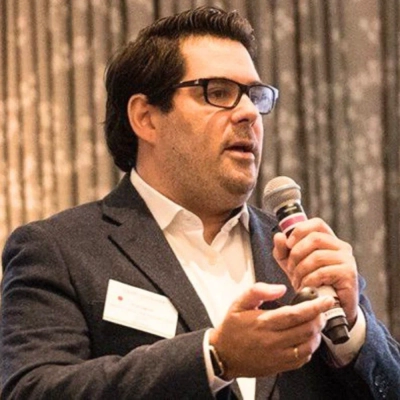9 Ways to Successfully Automate Critical Infrastructure Processes and their Unexpected Benefits
Discover the transformative power of automation in critical infrastructure processes. This article unveils expert insights into unexpected benefits and successful implementation strategies. From patch management to compliance monitoring, learn how automation can revolutionize operations and drive innovation in your organization.
- Automate Patch Management for Improved Efficiency
- Centralize RMM Platform for Enhanced Security
- AI-Driven Threat Detection Transforms Security Monitoring
- Server Monitoring Automation Reveals Resource Optimization
- Streamline Rate Confirmations for Real-Time Visibility
- Integrate Systems to Accelerate Employee Onboarding
- Link CRM and SharePoint for Seamless Onboarding
- Smart Lighting System Boosts Business Efficiency
- Automate Compliance Monitoring to Unlock Innovation
Automate Patch Management for Improved Efficiency
One of the most impactful automations I have implemented was automated patch management for a client's server infrastructure. Previously, their IT team spent entire weekends manually applying updates, rebooting systems, and documenting the process, which was slow, error-prone, and exhausting. By introducing a managed patching solution that schedules updates during off-hours, validates installations, and automatically reports compliance, we significantly improved efficiency. In the first month, the team transitioned from dedicating weekends to patching to simply reviewing a report on Monday morning.
Beyond time savings, the automation significantly improved morale and trust. The IT team could focus on higher-value projects, while business leaders gained real-time visibility into their security posture. This transparency strengthened the relationship between IT and leadership, as patching became a measurable and reliable process. Automation not only saved hours but also elevated IT's role in supporting business security.
Centralize RMM Platform for Enhanced Security
Previously, a healthcare client with approximately 150 endpoints relied on manual monthly patch management, which required their IT team to review, approve, and deploy updates outside of business hours. This process was time-consuming and prone to missed updates or errors. I implemented a centralized RMM platform, enabling us to schedule, deploy, and verify patches automatically, with rollback options in place for any failures.
The client was most impressed by the significant reduction in security alerts, not just the time saved. Consistent, automated patching minimized vulnerabilities that previously remained unaddressed for weeks. Their cyber insurance provider recognized the improved process with a premium discount. This change not only freed up IT resources but also enhanced compliance and reduced risk. Automation can fundamentally shift how IT is valued within a business.

AI-Driven Threat Detection Transforms Security Monitoring
I recently automated our entire network security monitoring system using AI-driven threat detection, transforming what was once a manual, reactive process into a proactive defense mechanism.
The system continuously analyzes network traffic patterns across multiple data sources, from firewalls to user activity logs, identifying anomalies that human analysts would likely miss.
The implementation was complex but worthwhile. We integrated machine learning models that learned our network's normal behavior over three months, then deployed automated response protocols that could isolate threats within milliseconds of detection.
What surprised me most was how automation actually improved our team's morale rather than creating job insecurity.
Security analysts who previously spent 80% of their time on routine monitoring now focus on strategic threat hunting and developing new security protocols.
The accuracy improvement was another unexpected benefit. Our false positive rate dropped by 75%, which meant our team stopped experiencing alert fatigue and could respond more effectively to genuine threats.
Perhaps the most surprising outcome was the cultural shift it created. Other staff saw our success and started identifying their own automation opportunities, leading to a company-wide digital transformation initiative I hadn't anticipated.
The system also revealed security patterns we never knew existed. By analyzing data at machine speed, we discovered recurring vulnerability windows during shift changes that human monitoring had consistently missed for years.
Cost savings exceeded projections by 40%, but the real value came from preventing three major security incidents in the first year alone.
The automated system detected and neutralized these threats before they could impact operations, something our manual processes would have caught too late.
This experience taught me that automating critical infrastructure isn't just about efficiency; it's about enabling staff to take initiatives.

Server Monitoring Automation Reveals Resource Optimization
I recently automated our server monitoring and alert system, which was previously done manually by our IT team. I set up a system that checks server performance, storage, and network activity and sends real-time alerts if any thresholds are hit. This reduced human error and allowed the team to focus on more strategic initiatives instead of constant monitoring.
An added bonus was that the automation revealed patterns in system usage we hadn't seen before, showing us where we were wasting resources. We were able to optimize server performance and reduce operational costs by 12% in the first quarter. We also improved our response time to outages, minimized downtime, and kept client services up.
I learned that automating critical infrastructure processes can deliver efficiency and insights beyond what you originally intended.

Streamline Rate Confirmations for Real-Time Visibility
We worked with a transportation company to automate the import of rate confirmations — the documents brokers issue once a dispatcher negotiates terms.
By building a direct import, what used to take tens of minutes per load now happens instantly. That saved the team several person-days a month and cut data-entry errors by nearly 80%. The surprising benefit was visibility: finance and operations could now see loads, rates, and margins in real time. That meant faster billing, fewer disputes, and even smoother relationships with brokers, since confirmations were processed without delay.
Integrate Systems to Accelerate Employee Onboarding
In a previous role, I led the automation effort for onboarding employees, which was manual and time-consuming. An integration of the HRIS system with collaborative tools to automatically generate IT access requests, payroll setups, and training schedules brought the onboarding timeline from two weeks down to just three days. Immediate gains in efficiency came into play: New hires were faster to get all they needed to be productive, which fostered early engagement and a reduction in first-month frustrations. Unexpectedly, some indirect effects came about: better communication across different departments, the elimination of human errors during data entry, compliance issues being smooth sailing all the way due to consistent documentation, and even managers who were initially skeptical about the new process had more free time to give to mentoring instead of chasing existing processes. This automation saved hours for HR and IT processes, giving them an even smoother onboarding experience.

Link CRM and SharePoint for Seamless Onboarding
Automating a Critical Infrastructure Process Using Salesforce Integrations
In one project, I linked Salesforce and SharePoint to automate our customer onboarding process. When a sales representative closes a deal, the system automatically creates a SharePoint folder and the necessary tasks. This cut manual handoffs and errors. From my experience, the real value came in how it changed daily collaboration. Teams no longer had to chase files or updates, and everything stayed organized by account. It felt less like managing tools and more like focusing on clients. That practical shift is what made the integration stick.
Best Regards,
Thiago Terzi | Full-Stack Salesforce Developer
Co-Founder | Dgt27.com

Smart Lighting System Boosts Business Efficiency
I don't "successfully automate a critical infrastructure process." I just try to find a simple way to make a client's life easier. The "radical approach" was a simple, human one.
The process I had to completely reimagine was how I looked at a new job. For a long time, I was just doing the electrical work. But a tired mind isn't focused on the bigger picture. I realized that a good tradesman solves a problem and makes a business run smoother. I knew I had to change things completely. I had to shift my approach from just being an electrician to also being a problem solver.
The single most successful thing I've automated was a smart lighting system for a client. The "critical infrastructure" was just the lighting in their business. They had a problem with lights being left on all night, which was costing them a lot of money. The "automation" was a simple program that turned the lights on and off at a certain time. The unexpected benefit was that the client's employees were more focused on their work because they didn't have to worry about the lights.
The impact was on the business's bottom line and the morale of the employees. By solving a simple problem, I saved the business a lot of money and made the workplace more efficient. A client who sees that I care about their long-term success is more likely to trust me, and that's the most valuable thing you can have in this business.
My advice is simple: don't look for corporate gimmicks. A job done right is a job you don't have to go back to. Find a simple problem and solve it. That's the most effective way to "automate a process" and build a business that will last.

Automate Compliance Monitoring to Unlock Innovation
"Automation didn't just save us time; it gave our people the freedom to innovate and focus on what truly moves the business forward."
I believe automation isn't just about efficiency; it's about unlocking strategic capacity. One example was when we automated our compliance monitoring process, which had traditionally required endless hours of manual oversight. By implementing a secure automation framework, we not only reduced human error but also freed up our team to focus on higher-value initiatives like innovation and customer engagement. The unexpected benefit was the cultural shift: our people saw automation not as a threat but as an enabler of smarter work.




